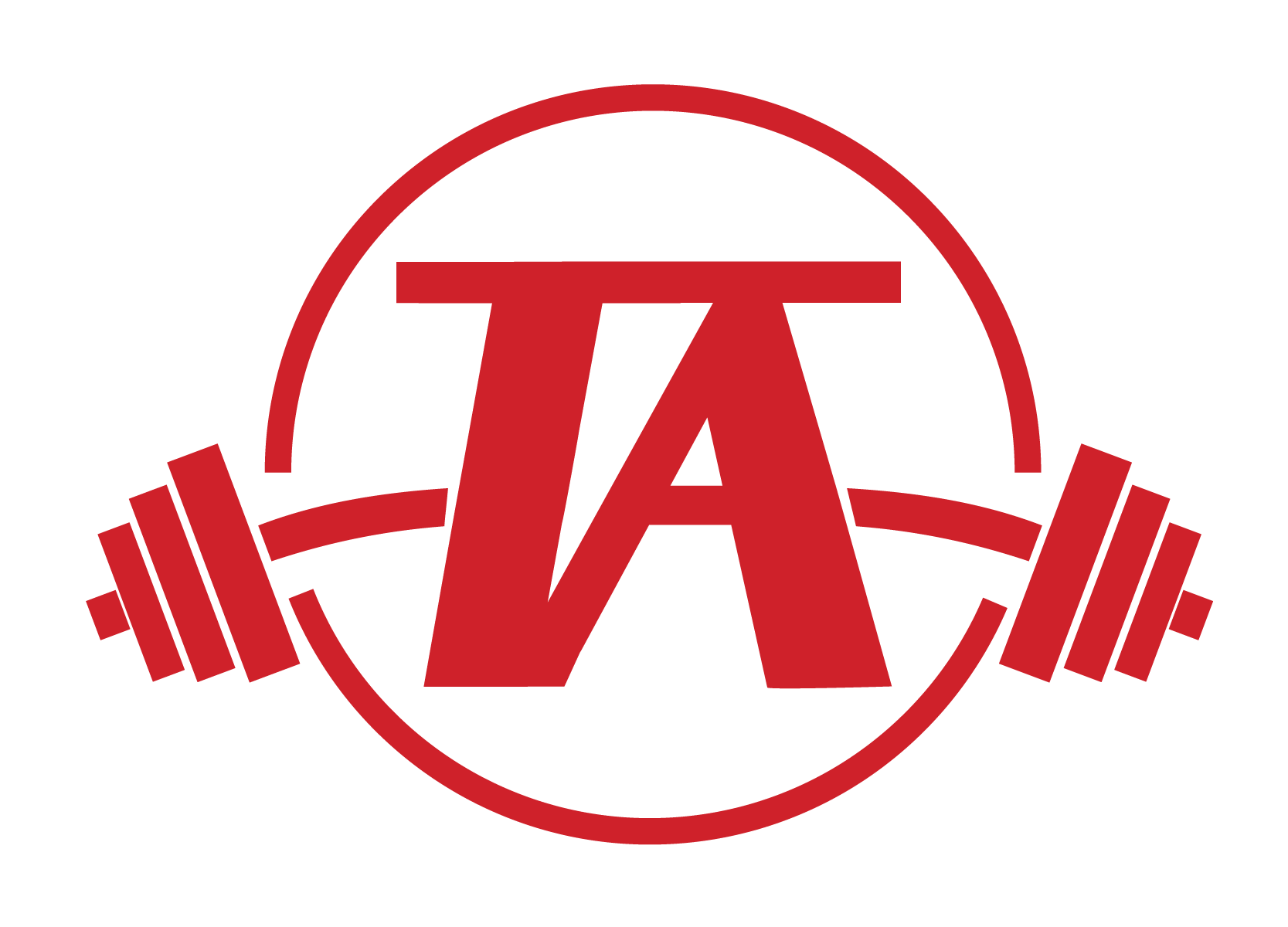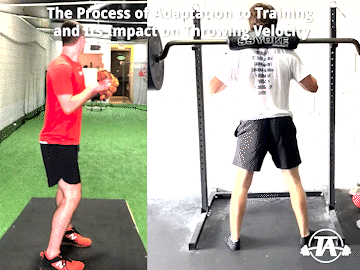If you train hard and are consistent for a long period of time, you’ll likely get better at your chosen sport, right? Well maybe, but it depends on the specifics of how you choose to spend your training time and the biological response to that training. This has manifested itself in the form of the periodization of training. Before we get to the principles of periodization and how they relate to improving throwing velocity, it’s important to understand how the body adapts.
Biological organisms all share one important feature: the ability to adapt to their environment in order to prioritize survival. The better an organism is able to adapt to the stimuli it encounters, the more likely it is to survive in the long term. Similarly, improvements in throwing velocity rely on this same principle.
Principles of Adaptation
When a training program is designed the goal is to achieve specific adaptations that lead to performance enhancement. In this case, we will use improved throwing velocity as the main goal.
There are four main features that dictate the training response and adaptations that will occur:
- Specificity
- Overload
- Accommodation
- Individualization
Specificity
This is the most important principle when it comes to improving performance in any area. This is the SAID principle (specific adaptations to imposed demands) in action. If you want to get better at throwing a baseball, are you going to throw a baseball or shoot a basketball?
Specificity can be viewed on a sliding scale based on the transfer of training to the competition movement. For example, dumbbell bench pressing may help improve the strength of the pecs and triceps through horizontal adduction and elbow extension which may have a positive effect on throwing velocity. Even though the motion is not too similar to the task of throwing, there is some transfer as dumbbell bench press targets some of the main muscles called on during the act of throwing. But if we consider throwing over and underload balls, there is likely to be an even greater transfer as it is very close to the end goal task (i.e. more specific to throwing).
Specificity has important implications for how significant an adaptation can be and what training modalities fit together. Research has shown us that attempting to improve maximal strength while overloading endurance training has an interference effect and can limit how much strength will be improved. However, the reverse is not true. Endurance performance is improved by maximal strength improvements as strength improvements still occur and VO2 max is not inhibited (Hickson, 1980). This point is illustrated well by a powerlifter and a distance runner. A powerlifter will likely limit their performance by overloading endurance training as part of their program. However, if the distance runner overloads strength training they are unlikely to inhibit their endurance development. The same is true in the context of throwing training-certain training goals are not compatible. For example, maximally improving throwing velocity and designing a new pitch may not be very compatible. Improving throwing velocity requires an athlete to be fresh and for volume to be limited, while designing a completely new pitch requires high volumes of throwing. But, the reverse may work well. You will likely be able to develop a new pitch to a very high level, while still potentially gaining some velocity, without the pitch design portion being inhibited.
Overload
This principle is simply that a stimulus must be stressful enough that the body is forced out of homeostasis. Overload can be applied in a few different ways:
- Intensity: increase the load or velocity
- Volume: increase how much you’re doing
- Variety: change the movement or drill
Exactly what qualifies as overloading will change as an athlete progresses as well as throughout the competitive year. For example, young athletes will be provided enough overload with relatively light loads and low volumes of training. As athletes progress higher intensity and volume is required to spur further adaptation.
Accommodation
If the exact same load, volume, and variation are used in perpetuity, eventually no additional adaptations will occur. The more an athlete is exposed to a given stimulus, the less potent the effect of that stimulus becomes. This is also covered by the repeated bout effect and is one of the important reasons that the means of training should remain as simple and moderately intense as possible until more complex and intense means are required. If athletes are exposed to advanced training methods too early in their careers their development may be limited as these stimuli will be far less potent when they become necessary to push adaptations.
Individualization
All throwers are going to do the majority of the same things and are subject to the same rules of baseball and laws of physics as their opponents. Individualization plays an important role in training, but less so than the above principles. It becomes more important as athletes progress and is therefore less important when dealing with very young or untrained athletes. However, one training program will not maximally benefit all athletes as differences in force-velocity profiles, lever length, body mass, elasticity, injury history, etc. will impact how a training program is designed. But, all athletes are likely to sprint, jump, throw, rotate, squat, hinge, press, and pull, it’s more a matter of subtle changes in loading, volume, and variations of the core movements. This is why the assessment process and a deep understanding of the systems and principles involved in improving throwing velocity are imperative.
Models of Adaptation to Training
Now that we’ve covered the principles that govern adaptation, let’s discuss the various models that have driven programming over the last few decades.
General Adaptation Syndrome (GAS)
Hans Selye was a Hungarian-Canadian endocrinologist who developed the theory of General Adaptation Syndrome (GAS) after he noticed the response by laboratory animals to a stressor being similar to that of chronically ill patients. GAS outlines the physiological response of an organism to stress. GAS is made up of three stages:
- Alarm Stage: During this stage stress is applied and negatively impacts the physiological state of the organism.
- Resistance Stage: Positive adaptations become noticeable. The organism returns to homeostasis or may show signs of an improved state (supercompensation).
- Exhaustion Stage: The imposed stress is too great for the organism to adapt to and performance decreases.
Supercompensation Theory (One Factor Theory)
The human body is amazing at adapting to stress and will do so constantly in order to maintain homeostasis. Training is merely the manipulation of this stress in order to achieve a specific response. Supercompensation involves four steps:
- Application of a stressor: Stress is applied and fatigue or reduced performance is the immediate result.
- Recovery: The body returns to homeostasis. Energy substrate levels and performance return to baseline (where performance was at the time of the application of the stressor).
- Supercompensation: Performance rebounds. Performance levels move beyond baseline.
- Loss of Supercompensation: Either a new stressor is applied and the process begins again or no new stress is applied and detraining begins.
Using this theory in training requires that a new stress be applied at the peak of supercompensation and theoretically results in a constantly rising homeostatic baseline. If the new stressor is applied too soon overreaching (and later overtraining) can result. If the new stressor is applied too late supercompensation will not be maximized.
Fitness-Fatigue Theory (Two Factor Theory)
Fitness-fatigue, or the two-factor theory of adaptation, uses the organism at homeostasis as the baseline. When a training stressor is applied there are two results: fitness and fatigue. Fatigue is a negative physiological response to the training stressor while fitness is a positive physiological response. Fatigue tends to have a larger magnitude but lasts for a shorter period of time. Fitness on the other hand tends to have a smaller magnitude but have longer term implications. According to Zatsiorsky and Kraemer, most estimations assume that the duration of the negative effect from fatigue is three times shorter than the positive effect of fitness (Zatsiorsky and Kraemer, 2006).
The adaptation then is determined by the sum of the positive effects of fitness and the negative effects of fatigue.
Delayed Training Effect
Fitness-fatigue theory best accounts for the variables of the training and adaptation process, taking into account both the positive and negative results of training. The delayed training effect is an important aspect of this theory.
After a period of intense, directed training, fitness and fatigue after-effects are high. However, in order to display the positive aspect of this (improved fitness), fatigue must be allowed to dissipate. This is where the principles of deloading and tapering come in to play. These two principles are very similar and involve reducing volume and intensity in order to realize the positive effects of the previous block of training either heading into the next training cycle (deload) or into a competition (taper). Typically, a deload will be short; often one week or less, while tapers may be longer; often multiple weeks.
The delayed training effect relies on overreaching. Overreaching is a period of training that is purposely very stressful, to the point of diminished performance, but short-term in its negative effects as a deload is then applied. Overtraining on the other hand, while rare, is overreaching misapplied. The stress remains too high for too long and the athlete cannot properly recover. Overreaching is an acute effect, while overtraining is chronic and can have long lasting negative implications for athletes’ careers.
If the delayed training effect is properly applied the positive benefits of high fitness levels are realized, while the negative benefits of fatigue are minimized which is when new levels of performance are reached.
Practical Application
While periodization and training theory have been based on Hans Selye’s GAS for many years, recently the fitness-fatigue model has become more popular as it better illustrates the specific adaptations to training as opposed to general stress. When designing throwing programs to improve velocity the principles of adaptation must be respected.
The training programs must be specific enough to spur adaptation in the desired performance metrics. Throwing will be an important piece to this and specificity will become more important as the athlete progresses. For example, young athletes will likely improve their velocity through almost any training means. If they get stronger, even without any specific throwing training, their velocity will likely increase. As athletes progress this will cease to be true and more intense and specific methods must be applied.
The program must provide overload in some regard. This can be achieved in a few different ways:
- Intensity: Increase distance, increase velocity (lighter implement or added momentum), increase force (static or heavier implement)
- Volume: Make more throws
- Variation: Overload a specific aspect of the delivery (constraints drills), throw from a variety of positions and static vs on the move, throw a variety of implements
The program must be resistant to accommodation by providing some variation. The same distance, velocity, drills, and volume can’t remain for the length of an athlete’s career or adaptations will cease.
The program must be individualized. Different throwers will present with different mechanical limitations, injury histories, body dimensions and lever lengths, force-velocity profiles, etc. and their programs should reflect their strengths and weaknesses.
Conclusion
The adaptations that are achieved from a training program are based on the principles of adaptation. Throwing velocity is no different in this regard. Rather than copying and pasting the throwing program of a big leaguer, you or your coach should think critically about what you want to accomplish and what your individual needs are that are holding you back from reaching that goal.
Interested in training with us remotely or in-person? Contact me and let’s set up some time to talk about your needs and our programming options.

